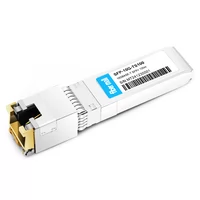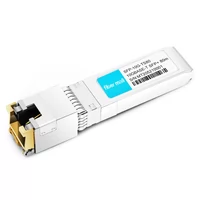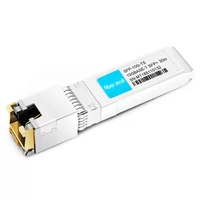As more companies embrace innovation and adopt technology in the corporate realm, there is an increasing need for higher reliability and speed copper networks. Out of the countless options offered, the 10G Copper Small Form-factor Pluggable (SFP) module stands out due to its ability to ensure high data transfer rates, efficiency, and scalability. This guide focuses on the 10G above Copper SFF SFP module, highlighting its specifications, benefits, and how it can be seamlessly incorporated within the existing networks. Be it a professional implementing upgrades in an enterprise setting or a home user wanting to learn more about networking, this overview intends to furnish the necessary information to deal with high-speed connectivity without stressing out.
Table of Contents
ToggleWhat is the 10G Copper SFP Module and How Does it Work?
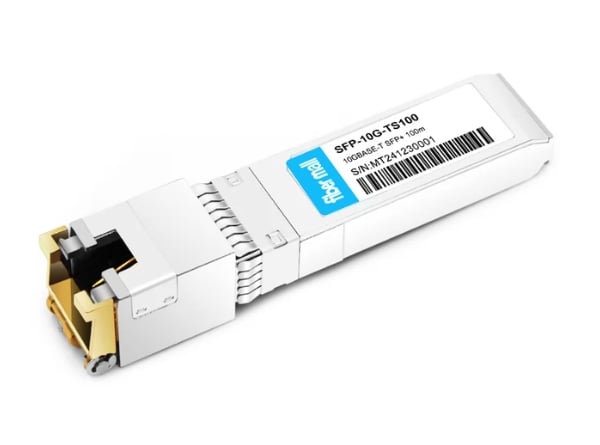
The 10 Gigabit Ethernet module, SFP, which is the SFP 10G Ethernet interface over copper, pulls the advantage of connecting over copper ports and facilitates high-speed data support of around 10 Gbps. It has been designed to be fitted into an SFP slot in a network switch or router, allowing deploying it on a current copper network without requiring a complete overhaul of the infrastructure. It uses the RJ45 interface to achieve this. This feature makes it easy for network managers to expand with high speed on already deployed passive Cat6a or Cat7 infrastructure, which minimizes the overall expenditure on high-speed applications without affecting the protocols being used.
Understanding the Basics of 10G Copper Transceiver
The 10G Copper SFP transceivers have evolved long in modern communication since their inception; they allow for high-speed data transfer over a standard copper transmission medium. This element’s prime function is converting the digital output given by the networking device into an electrical signal that can be transmitted using a copper cable. Such a device permits the use of RJ45 connectors and, hence, the connection and use of existing networks using Cat6a or Cat7 cables without expensive changes to the setup. This module is designed to work with data rates of up to 10 Gbps, which serves the requirement for applications that demand such bandwidths. A consistent aspect of this module is that it does not affect the existing Ethernet protocol, thus easing the challenge of moving to a new, faster means of networking while ensuring that the performance and growth of the networked environment are optimized.
The Role of RJ45 in 10G Transceiver Module
The 10G transceiver module uses an RJ45 interface to connect copper wires and transmit electric signals over them. This interface is well-known in ethernet networking. In the case of the 10G transceiver, high data streams can be successfully transmitted through cables such as the Cat 6a. In this case, new fiber optic wire installations would not be needed. Such a broadly adopted standard allows the transceiver module to take full advantage of the available equipment setup, thus making future upgrades easier and expanding the network cheaper.
How 10GBase-T Enhances Network Performance
The adoption of 10GBase-T dramatically improves the network by allowing standard twisted-pair copper cabling, particularly Cat6a or Cat7 cables, which are critical for successful Ethernet copper systems. It uses this technology, potentially having a data transfer rate of up to 10 GB per second. It dramatically expands the bandwidth needed to meet modern-era applications requiring quick data transmission and processing through 10GBase-T copper technology. 10GBase-T not only reflects exceptional high-speed performance but also provides tremendous scope in the configuration of the network, with its performance being up to 100 meters. This eases the expansion of high-speed networks in already set-up networks, reducing the costs and the number of disturbances caused. The use of 10GBase-T is also within the guidelines of Ethernet standards, which means that it will efficiently synergize with existing network arrangements whilst offering a platform appropriate for future network growth.
Is 10G Copper SFP Compatible with Different Networking Equipment?
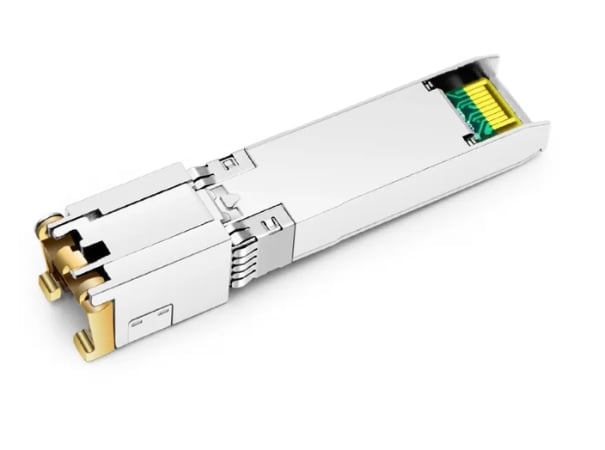
Cisco SFP-10G-T-S Compatibility
The modular design of the Cisco SFP-10G-T-S module makes it versatile and easy to implement into existing structures while functioning effectively with a wide range of networks. According to some football market experts online, this copper transceiver works on the 10GBASE-T standard and is compatible with many Cisco devices. The device aids transmission through Cat 6a and Cat 7 copper wiring and is reliable for a link distance of up to 30m. Hence, it can be deployed in workstations in data centers, the enterprise wiring closet, and other sites where high-performance networks and Cisco Appliances are deployed. The device is also said to be plug-and-play with simple installation, improving mobility in an environment by working with current and future networks.
OEM and MSA Compatible Options
The employed third-party OEM and MSA-compatible transceivers are economical replacements for the original manufacturers, enabling the organizations to operate their networks at reasonable expenditures. Because specific requirements produce these transceivers, they are compatible not only with Cisco routers but also with the equipment of other manufacturers, including Juniper, HP, and Arista. According to some trustworthy Internet sources, these modules can perform almost as well as brand products and meet the requirements of other cabling standards, such as Cat6a and Cat7 for 10GBASE-T applications. Thus, such buoys help promote robust growth and network flexibility for organizations with no option but to compromise on costs while seeking performance.
What are the Advantages and Disadvantages of 10G Copper Transceivers?
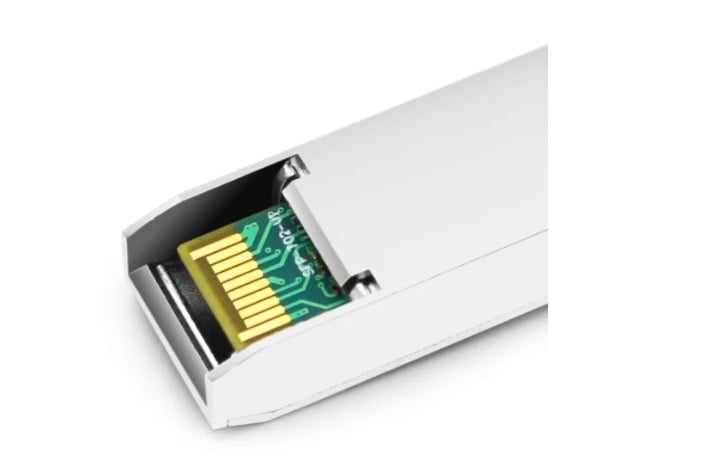
Benefits of Using Copper Cable for 10G Networking
Copper cabling, particularly twisted pair cables such as Cat6a and Cat7, is advantageous for 10G networking. Firstly, compared to fiber optics, it reduces material costs and installation prices, including costs associated with RJ45 copper transceivers. These cables require minimal effort during installation and utilize the pre-existing infrastructure, which reduces the time frame involved during large-scale modernization plans. Furthermore, quality copper modules ensure high durability and interference-free physical impact, guaranteeing functionality in all environments. Spoiling the network complexity, copper cabling also facilitates PoE, which allows data and power to travel through the same cable while eliminating the necessity for several power sources. With these attributes, copper cable is widely employed in data centers and enterprise networks to obtain maximum throughput with minimum resources.
Limitations of the 30m Transceiver Range
The maximum distance copper transceivers can cover, also referred to as the 30 reach, is primarily due to the effect of electromagnetic interference and the signal getting weaker. This is true because as the distance increases, shielding as well as noise mitigation becomes increasingly essential, mainly because it risks the signal getting corrupted and guaranteeing a constant 10g speed over copper when the distance is increased demands clean cabling and clean connections, also with the use of SFP-10G-T-S 10GBase-T SFP modules to prevent any potential quality degradation. As for anything beyond this distance, fiber optical cables are usually the best since they provide for the most minor external interference while also being the best in signal transmission. Therefore, companies look into the specific environment in which they plan to set up the network along with their networking goals to see if the copper transceivers, to this extent, are up to their standards.
Comparing Copper and Optical Solutions
When deciding whether to use copper or optical solutions for data transmission, many characteristics should be examined to establish what best meets the sought network requirements. As already indicated, copper cabling is advantageous in most cases due to low costs, ease of installation, and the possibility of using Power over Ethernet. However, the drawbacks begin to show with increased length as the problems of attenuation and electromagnetic interference come into play.
Meanwhile, optical fibers allow higher bandwidth, have less attenuation at more extraordinary lengths, and are unaffected by electromagnetic interference. In addition, fiber optics are capable of a wider range of data rates and distances, making them ideal for backbone and long-haul communication. Even though the material and installation costs incurred during the use of fiber optics would be greater than those of copper cabling, the durability and robustness of optical systems may offset or lead to lower expenditures in the long term.
Copper solutions are typically employed by businesses for short-range applications and interconnections within the building, whereas optical fibers are best for long distances, i.e., between facilities or as a high-capacity backbone. In the end, however, one needs to assess the available copper and optical solutions in terms of expected performance, cost, and enterprise needs in the future.
How to Ensure Proper Installation and Maintenance of 10G Copper SFP Modules?
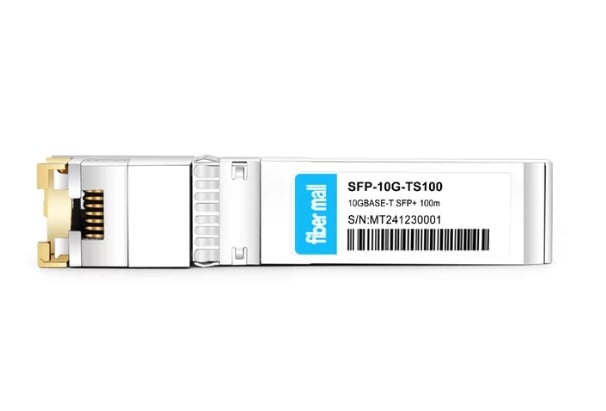
Steps for Installing 10GBase-T SFP
- Preparation: Before beginning the installation of the 10GBase-T SFP module, it’s essential to power off all the networking devices and put on the necessary PPE. Also, ensure that the module will fit into the router or switch on which it will be mounted.
- Handling of the SFP Module: SFP modules are delicate and must be carefully worked on. The golden contact pins should have minimal contact to avert electrostatic damage. Always make sure these components are installed with an antistatic wrist strap.
- Insertion of the Module: Place the 10GBase-T SFP module next to the slot provided in the network devices. Gently push the module into the slot until it fits perfectly. Never try to push the module, as it may break the devices.
- Connecting the Cable: Now that the module is fixed, it is time to place an RJ45 connector compatible with it over the port on the module. Make sure the appropriately fitted Cat6a ethernet cable snaps into the jack.
- Powering and Testing: Use the ethernet cable to start inverting the connections with the module and start the devices. See if the recommended LED light for the module is glowing. Run different tests through the network to guarantee that the quality of the signal and the data in transmissions meet the desired standards.
- Ongoing Maintenance: Ensure the SFP modules are regularly checked for dust or any physical damage. Clean connectors as needed and ensure no cables are excessively bent or under undue stress. Also, regular software and firmware updates must be performed using the instructions supplied by the manufacturers.
Following the above steps guarantees the proper installation of your 10GBase-T SFP module, thereby increasing your networking configuration’s dependability and operational efficiency.
Maintaining Copper Transceiver Performance
To maintain the transceivers’ maximum performance and avoid their malfunction, one should observe the specified recommendations regarding handling, installing, and managing the RJ45 transceiver’s connectors. To begin with, make sure that the operational transceivers match the compatible requirements of the network devices and install the transceivers in the recommended operating range, avoiding extreme heat and humidity. Secondly, manage where the connectors and components are located so they are cleaned and not contaminated with dust particles. Use cleaning swabs and swab the area with the appropriate material. Furthermore, the network should be checked and tested regularly, solving issues of loss of signal or connectivity due to copper RJ 45 connections to ensure there are no interruptions and the copper RJ 45 connections are reliable. Finally, regularly updating the firmware of the network devices can provide better connectivity, stability, and operational efficiency throughout the network. Adhering to these strategies will help increase the lifetime and performance of the copper transceivers, thus ensuring timely information transfer.
Understanding MSA Specifications for Reliable Operation
It is essential to comprehend the details of MSA (Multi-Source Agreement) to ensure the network components function correctly. In the findings, I noted that the resources concerning MSA specifications depict standard agreements across all the manufacturers, which offer the cut-offs and guidelines for transceiver construction. This specification guarantees interworking between the equipment of different suppliers, which ensures easy plugging and use of devices from other suppliers in one network. The form factor, power consumption, and signal integrity all have a bearing on the performance and reliability of the transceiver. As a result, such cooperation enables them to produce reasonably performing and compatible products, which improves the network’s performance and stability.
How Does the 10G Copper SFP Transceiver Benefit Your Network?
Boosting Ethernet Connectivity Across Networks
The demand for fiber optic installations diminishes using the 10G Copper SFP Transceiver since it promotes enhanced Ethernet connectivity by using existing copper-cored infrastructure to increase data transfer rates. Operating at a maximum of 10Gbps, this transceiver efficiently connects switches, servers, and other network interfaces. It helps optimize network integration using the standardized RJ-45 interface, providing much-needed flexibility without complicated additional wiring requirements, mainly using Trendnet copper module. Also, these transceivers are constructed to work using low voltage, providing sufficient thermal regulation and optimizing costs and efficiency for modern-day data centers. Such versatility and performance augmentation bolster smooth transitions and network growth, enabling strong networks across different network parts.
Cost-Effective Expansion with 10G Copper Transceiver Module
The 10G Copper Transceiver Module is affordable for enhancing network capabilities without excessive remodeling. It sends 10 Gbps traffic over CAT6a or CAT7 copper cables, reducing fiber installation expenditures. It is also inexpensive in terms of operational costs due to low power requirements while achieving efficient data throughput. Its adaptation into an existing Ethernet network allows users to modernize their infrastructure orderly and flexibly and targets economic and self-sustaining expansion of the dominant web. Significant industry web sources accept This and other perspectives as solutions.
Maximizing Switch and Router Efficiency
The effectiveness of using switches and routers can be significantly enhanced through proper network configurations and optimal practices. As one of the measures, using VLANs (Virtual Local Area Networks) facilitates the partitioning of networks and traffic control, positively impacting performance. The Quality of Service (QoS) parameters are critical since they ensure that necessary traffic is prioritized and that available bandwidth is effectively controlled for maximum economic efficiency of data transfers. Security and performance can be improved with the routine installation of firmware updates, which address risks and improve various capabilities. Beyond routine monitoring, network administrators can also make use of automation tools, which will replace manual work that introduces errors that slow down the network. The above combined helps switches and routers function better, improving users’ networking experience.
Reference Sources
Frequently Asked Questions (FAQs)
Q: Provide details on a 10G Copper SFP and its functioning.
A: The 10G Copper SFP (Small-Form Factor Pluggable) module is used on high-spec networks. It is a hot-swappable, compact module that enhances connectivity. It is also designed specifically for RJ-45. It creates communications to transmit over copper taper cables by translating light into electrical signals to complete tasks at Gbps or more. Therefore, it aims to make network connections affordable.
Q: List the advantages of utilizing a 10G Copper SFP module.
A: 10G Copper SFP modules help build multi-gigabit connections, which are as cost-effective as fiber optic solutions. One of the modules’ key features is that it does not require the users to turn off the network itself; it is hot pluggable and can be easily replaced or installed. This also speaks to its energy-efficient nature, as out-shocking happens. Further, these modules tend to be IEEE 802.3an compliant.
Q: What is the maximum distance 10G Copper SFP can reach in transmitting data?
A: The farthest reach for 10G copper SFP modules mainly depends on the SFP channel category used. For high-standard Cat6a or Cat7 cables, these modules can communicate at a distance of almost 30 meters. Nevertheless, it is crucial to mention that the distance is also relative to the specific module, cable quality, and other elements.
Q: Can 10G Copper SFP modules work with other manufacturers?
A: Many companies designing 10G Copper SFP modules claim that those modules can efficiently work with many other network equipment devices, such as Cisco, Juniper, Ubiquiti, Arista, Brocade, Dell, and Netgear. However, it is mandatory to check with the network equipment you are using or the manufacturer or seller to ensure the device will work well with the other manufacturers’ devices in a network.
Q: What are some of the system’s acceptable low and high temperatures using 10G Copper SFP?
A: The acceptable temperature range for 10G Copper SFP modules depends on many factors, the manufacturer and the specific model being just two. Generally, these modules were made for venturing in and within normal operating temperature levels, often between forty-three and eighty degrees. Some industrial-grade modules come with additional temperature ranges for a broader scope of access in more extreme areas.
Q: Can multiple Ethernet revisions be supported on 10G copper SFPs?
A: Yes, it is known that several 10G copper SFPs comply with 10GBASE-T, NBASE-T, and multi-gigabit ethernet standards. Such a design enables old speed standards of 1 Gbps and 2.5 Gbps to be backward compatible, making network configuration expansions more feasible.
Q: Which category of cables will be able to work with 10G copper SFPs?
A: Twisted pair cables of category 6a and above are preferred as 10G copper SFPs can reach that distance. Cat6a cables aim to reduce crosstalk and electromagnetic interference, allowing for higher data connectivity without losing speed while still being cost-efficient for the network in the long run.
Q: Before buying 10G copper SFP modules, what focus areas should be kept in mind?
A: Among networks, considering network equipment, required distance, power watts, and warranty, among other technical aspects, are essential when deciding on the 10G copper SFP modules. Some sellers offer these RJ45’s copper transceiver lifetime modules, allowing users peace of mind when pulling out buyers and customers. Many sellers offer different types of amplifiers, so checking if the correct 10g or 45w amplifier is bought, together with making sure it is entirely new, is crucial.

